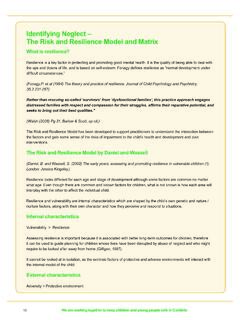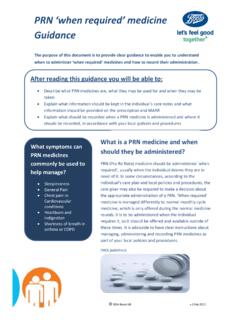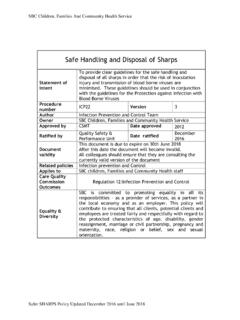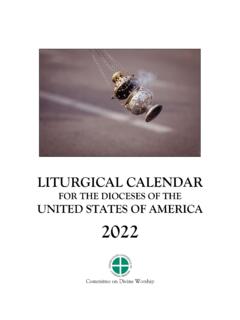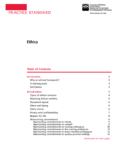Transcription of Derby City and Derbyshire Threshold Document Providing ...
1 Derby and Derbyshire Safeguarding Children Partnership December 2019 Page 1 of 25 Derby City and Derbyshire Threshold Document Providing effective multi-agency support December 2019 Shared guidance to help all practitioners working with children, young people, families and carers to provide additional and early help, intensive and specialist support Effective Support for Children, Young People and their families within Derby City and Derbyshire Contents 1. Introduction Page 2 2. How we respond to the needs of Children and Families Page 3 3. Information Sharing and Consent Page 5 4. Levels of Need and Help Page 6 5. Threshold Table Page 10 6. Next Steps Page 13 Appendices 1 Derbyshire : If you are concerned about a child, young person or family process flowchart Page 15 2 Derby City: If you are concerned about a child, young person or family process flowchart Page 16 3 Threshold Indicators of Possible Need Table Page 17 4 Glossary of Key Definitions and Acronyms Page 24 To be read in conjunction with the Derby and Derbyshire Safeguarding Children Procedures Version Author/s Signed off by Date Review Date 1.
2 HoS Starting Point & HoS & Dep HoS First Contact Team, DDSCP Officer DDSCP Policies & Procedures Group October 2019 November 2020 Derby and Derbyshire Safeguarding Children Partnership December 2019 Page 2 of 25 1. Introduction In 2018, the Government published revised statutory guidance, Working Together to Safeguard Children: A guide to inter-agency working to safeguarding and promote the welfare of children . It sets out the legal requirements that health professionals, social workers, police, education professionals and others working with unborn babies, children and young people must follow. It emphasises that safeguarding is the responsibility of all professionals working with children and provides advice in support of Sections 10 and 11 of the Children Act 2004 where the primary duties for all agencies are set out.
3 Working Together to Safeguard Children (2018) government guidance states: Everybody who works with children has a responsibility for keeping them safe. No single practitioner can have a full picture of a child s needs and circumstances and, if children and families are to receive the right help at the right time, everyone who comes into contact with them has a role to play in identifying concerns, sharing information and taking prompt action. As a partnership we agree to help families and work with them to help prevent their children s needs escalating. All agencies will actively seek to work with the child and family at the most appropriate level of need. This guide to effective support in Derby City and Derbyshire explains the criteria for Providing help to unborn babies, children, young people, families and carers. It should be considered as the local Threshold Document required by Working Together 2018 and should be read in parallel to this guidance, our local safeguarding children procedures and individual agency child protection policies.
4 Working Together is statutory guidance and therefore all practitioners working with unborn babies, children, young people and families should make time to read the Document and familiarise themselves with our local safeguarding children procedures. Local arrangements to implement the requirements should be prioritised by leaders and senior managers in every agency with responsibilities for unborn babies, children, young people, families and carers to enable them to safeguard children and to act in their best interests. We believe that a collaborative approach and engagement in quality conversations is also necessary to identify and respond to the needs of unborn babies, children and young people. Thresholds should not be used as a single point of entry to access either intensive early help services or children s social care. An approach which relies on Threshold indicators as a check list approach is mechanistic and on its own it is not able to take into account the complexities of individual children s lives.
5 It can also emphasise family weaknesses and overlook the family s strengths which can then raise the Threshold for concern unnecessarily. Sometimes conversations about how families' needs can be met can be challenging; practitioners and families may not always agree. In such instances practitioners should seek support from their line manager or agency safeguarding lead and if necessary implement the Multi-Agency Dispute Resolution and Escalation Policy. Derby and Derbyshire Safeguarding Children Partnership December 2019 Page 3 of 25 All conversations, whatever the outcome, should be recorded appropriately in order to show that they took place, identify what was agreed and evaluate how effectively they enabled needs to be met. In this way quality conversations can demonstrate their impact on successful practice. Our vision is to ensure that unborn babies, children and young people access the right service at the right time, at the lowest appropriate level of intervention.
6 In order to achieve this, constructive quality conversations need to form part of a meaningful assessment to improve decision making and joint working to provide the right help at the right time for families. Our Principles for effective support All practitioners are committed to working to the following principles: The child is at the centre of everything we do and we will listen to the voice of the child. Our aim is to build resilience in children and families by working to families strengths. We will work together, openly and honestly with children and families, this may include having challenging conversations with families. We recognise that families can identify their own strengths, needs and solutions. We will use evidenced based strengths and solution focused approaches to support families to do this and to build resilience in children and families.
7 Children s needs will always take priority, therefore if a practitioner identifies risks which the family may or may not agree with appropriate action will be taken to keep the child safe. We will work with families at the earliest opportunity to help them identify things they want to change and the support they need to make it happen. Wherever possible needs will be met by universal services. We will be clear and consistent about the outcomes we are working towards. Once family circumstances improve, services will reduce or end, with a clear and agreed pathway forward, so we do not create dependence on services. We will fully utilise the support and strength available in our communities. We will work together aligning our resources so we can best support families and do what needs to be done when it is needed. 2. How we respond to the needs of Children and Families All partners will offer support as soon as they are aware of an unborn baby/child/young person s additional needs; the levels of need referred to in this Document are a means of developing a shared understanding about working with families.
8 As with all guidance relating to access to services the most important part is forming an informed professional judgement about next steps. The criteria in this Document should be used to guide Derby and Derbyshire Safeguarding Children Partnership December 2019 Page 4 of 25 professional discussions and not to support fixed and inflexible positions. Their purpose is to help practitioners and managers make decisions about whether and how a family and its associated network are able to protect and promote the welfare of an unborn baby, child or young person. It is important to note that unborn babies, children, young people and families rarely fall neatly into one level of need; they may have elements of need across more than one level and there will always be room for different interpretations. The framework provides a starting point for thinking and conversations; it is not intended to provide answers.
9 unborn babies, children, young people and families will also change and move levels as their needs and circumstances change. Working in Partnership to help In Derby City and Derbyshire , practitioners are seeking to work collaboratively and respectfully with the family (or with young people on their own where it is age appropriate) in order to support them to address their needs at the lowest possible level and at the earliest possible time. We recognise that each unborn baby, child, young person and family member is an individual, each family is unique in its make-up and reaching decisions about levels of need and the best intervention requires curious discussion, reflection and professional judgement. In order to understand the unborn baby/child/ young person/family situation practitioners should consider the questions below within their assessment.
10 What life is like for each unborn baby/child/young person and their family? What are the child s wishes and feelings? What are the harms or risks (past and present) that we are worried about in respect of an unborn baby/child/young person? Are there any concerns or risks external to the family, such as in the extended family, peer group, community, school or on-line? What has happened to this child/young person? What trauma may have impacted on them? What are we worried is going to happen to the unborn baby/child/young person in the future if nothing changes? What are the parents/ carers understanding of the situation and to what extent have they engaged with the services? What are the child/young person s and family s strengths? Could these be utilised? What support and interventions have been offered previously? Did these make a difference?
